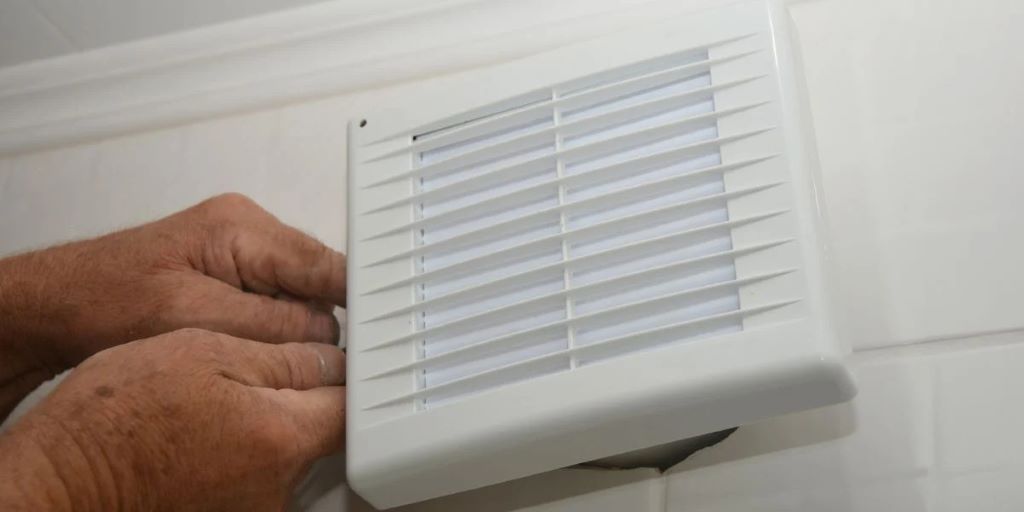Have you ever wondered about the devices that keep the air in your living spaces fresh and comfortable? Exhaust fans and ventilation fans are two essential components of a well-ventilated environment, but they serve slightly different purposes. In this article, we’ll dive into the nuances of exhaust fans and ventilation fans, exploring their functions, benefits, and the situations where each is commonly used. This content is presented by Dightonrock.com.
Understanding the Basics
Before we delve into the differences, let’s establish a foundation by understanding what these fans are and how they operate.
Exhaust Fans: Clearing the Air
Imagine stepping out of a steamy shower or finishing up a cooking session in the kitchen. What’s the first thing you reach for? That’s right, the exhaust fan. Exhaust fans are the unsung heroes that pull pollutants, unwanted odors, and stale air out of indoor spaces. They’re like the invisible hands that keep your bathrooms and kitchens fresh and pleasant. Explore the facts about kitchen exhaust fan.
Ventilation Fans: Breathing Life In
Ventilation fans, on the other hand, are more like the lungs of your living spaces. These fans work to bring in fresh air from the outside, enriching the indoor environment with a fresh supply of oxygen. They’re not just about getting rid of the bad air – they’re about infusing your spaces with revitalizing and oxygenated air.
Key Differences
Now that we have a basic understanding, let’s explore the key differences between exhaust fans and ventilation fans:
Exhaust Fans
- Pollutant Extraction: The primary function of exhaust fans is to extract pollutants and stale air from indoor spaces. Whether it’s the steam from your shower or the lingering smell of last night’s dinner, exhaust fans are there to whisk it away.
- Indoor Air Quality: By removing harmful particles and odors, exhaust fans significantly contribute to improved indoor air quality. This is especially crucial in spaces where hygiene matters most, like bathrooms and kitchens.
- Moisture Control: Exhaust fans play a pivotal role in preventing moisture-related issues such as mold and mildew buildup. By removing excess moisture, they help maintain a healthy and dry environment.
- Venting Requirements: These fans require proper venting to the outside through ductwork or sidewalls. This ensures that the extracted air doesn’t simply circulate within the same space.
Ventilation Fans
- Fresh Air Infusion: Ventilation fans shine at bringing fresh outdoor air into enclosed indoor spaces. This influx of oxygenated air helps rejuvenate the indoor environment.
- Air Circulation: These fans contribute to the overall circulation of air within a building or home. This is essential for preventing a stuffy atmosphere and ensuring a constant supply of fresh air.
- Enhanced Air Quality: Like exhaust fans, ventilation fans also play a role in improving indoor air quality. The introduction of fresh air dilutes pollutants and promotes a healthier living space.
- Versatility: Ventilation fans are used not only in residential areas but also in commercial spaces. They’re versatile tools for ensuring adequate air exchange.
- Synergy with Exhaust Fans: Ventilation fans can work in tandem with exhaust fans to create a balanced airflow. This collaborative approach ensures that the extracted air is effectively replaced with fresh outdoor air.
Balancing Air Quality
In a nutshell, exhaust fans are primarily focused on removing pollutants and stale air, making them heroes of hygiene, while ventilation fans specialize in bringing the outdoors in, replenishing indoor spaces with fresh air. Together, they form a dynamic duo that contributes to maintaining optimal indoor air quality and circulation.
Conclusion
Next time you walk into a well-ventilated room, take a moment to appreciate the role that exhaust fans and ventilation fans play. What are some basic kitchen skills? These essential tools ensure air quality and comfort, making a significant difference in your surroundings. These unassuming devices work tirelessly behind the scenes to create a comfortable and healthy environment for you and your loved ones.
FAQs
- Do I need both exhaust and ventilation fans in my home?
Absolutely. While exhaust fans target specific areas like bathrooms and kitchens, ventilation fans ensure overall air circulation, contributing to a well-balanced indoor environment.
- Can ventilation fans replace exhaust fans?
No, they serve different purposes. Ventilation fans bring fresh air, while exhaust fans eliminate pollutants. Both are necessary for comprehensive air quality management.
- Are these fans energy-efficient?
Many modern fans come with energy-efficient features. Look for fans with Energy Star ratings for optimal efficiency.
- How often should I clean these fans?
Regular maintenance is important. Clean your fans at least twice a year to ensure optimal performance.
- Can I install these fans myself?
While it’s possible to install some fans yourself, it’s recommended to consult a professional to ensure proper installation and functionality.






